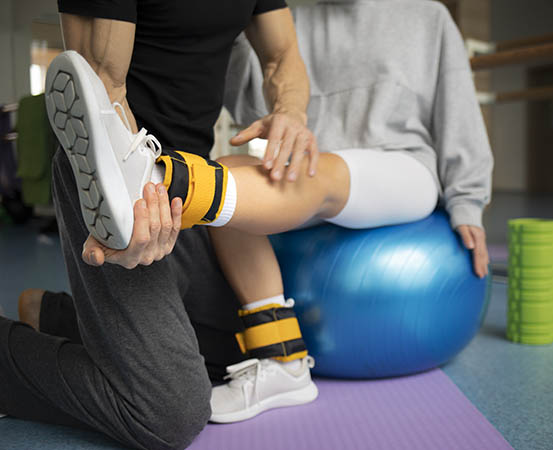
The load of the body, be it while standing or moving, is borne by the small, yet intricate ankle joint complex, which works in conjunction with the knees. Strengthening the lower limbs is important for not just physical activities or sports, but also healthy, pain-free living.
Leg press, leg extensions, hamstring curls and hip flexor machines are some common gym equipment which help build strength in the lower limbs. They also help reduce muscle atrophy. But if the gym is not an option for you, try using ankle weights to add resistance or load while doing bodyweight exercises.
Ankle weights are very versatile personal equipment. Besides adding resistance, they are also used in rehabilitation and physiotherapy.
What are ankle weights?
Ankle weights are small bags that contain metal or sand. They come with a strap that can be used to secure the weight around the ankle.
“Ankle weight is a basic exercise tool that puts a load on the muscles while performing movements for the lower limb,” says Sudhir Bhardwaj, a sports physiotherapist from Gurugram. “[It turns] regular activities [into] resistance exercises for the muscles. It [not only] helps improve strength but also establishes coordination and balance between limbs.”
What is the right load for ankle weights?
The feet are made up of small bones and cartilage. The ankle joint complex is small, and any excess load can put undue pressure on it.
The individual’s ability, age, injuries (if any) and an appropriate training regimen should be considered while deciding the right weight for ankle weights, says Sunil Kumar, a Bengaluru-based fitness trainer.
“The kind of sport the individual is training for is also important to decide whether the trainee requires ankle weights and the weight of the ankle weights,” Kumar says.
Bharadwaj adds, “Though there are some specific examinations to determine the right weight, one should start with a minimum weight of 500 grams and must not go beyond 3 percent of body weight of the individual [as a standard practice].”
A gradual increment ensures injury or pain-free progress in strength and performance.
Archita Tiwari, senior physiotherapist and director at Rehabics Physiotherapy, Bengaluru, says people can start with half a kilogram and gradually increase the weight as leg strength improves.
Ankle weight benefits
A lot of exercises like plyometrics, abdominal exercises, knee raises, hanging knee raises, lying leg raises and hip mobility drills can be done using ankle weights.
“It is useful for people who want to regain their strength and improve their lower limb functionality. It works well for the elderly also,” says Kumar.
Bhardwaj adds, “Ankle weights are easy-to-carry and easy-to-use tools for limb exercises and cover almost all strength, balance and coordination exercises. These are long-lasting and less expensive exercise equipment. They are good for endurance training but not for power training.”
Walking with weights on the ankle helps tone the muscles and improve gait.
“The low weight and [its contact with the muscles in action] burn your excess fat and tone your muscles,” says Bhardwaj. “During a training session with ankle weights on, the repetitive and resisted movements improve the strength of the concerned muscle. At the same time, its coordination with other muscles and joints gets better as well, which finally helps improve gait.”
Kumar adds, “They do help in restoring balance because it helps [train one limb at a time]. You can use them to train your non-dominant side to make it nearly as functional as the dominant side.”
Precautions
Improper use and overuse can lead to ankle injuries.
“Ankle dislocation can take place with overuse, [especially in people with flat feet who use ankle weights],” says Kumar. “One can also have dislocation issues with the knee since the body is supported by the ankles through the knees. And continuously wearing it could lead to certain imbalance issues as well.”
“If the exercise is not done according to the physiotherapist’s prescription, then it might create stress on the joint and affect the ligaments. So everyday training with the ankle weight is not advised,” adds Tiwari.
Takeaways
- Ankle weights are worn on the legs close to the ankle while doing plyometrics, abdominal exercises, knee raises, hanging knee raises, lying leg raises, etc.
- They increase strength in the leg muscles, tone the muscles, and improve balance and gait.
- Overuse or improper use can lead to injuries like ankle and knee dislocation.

















